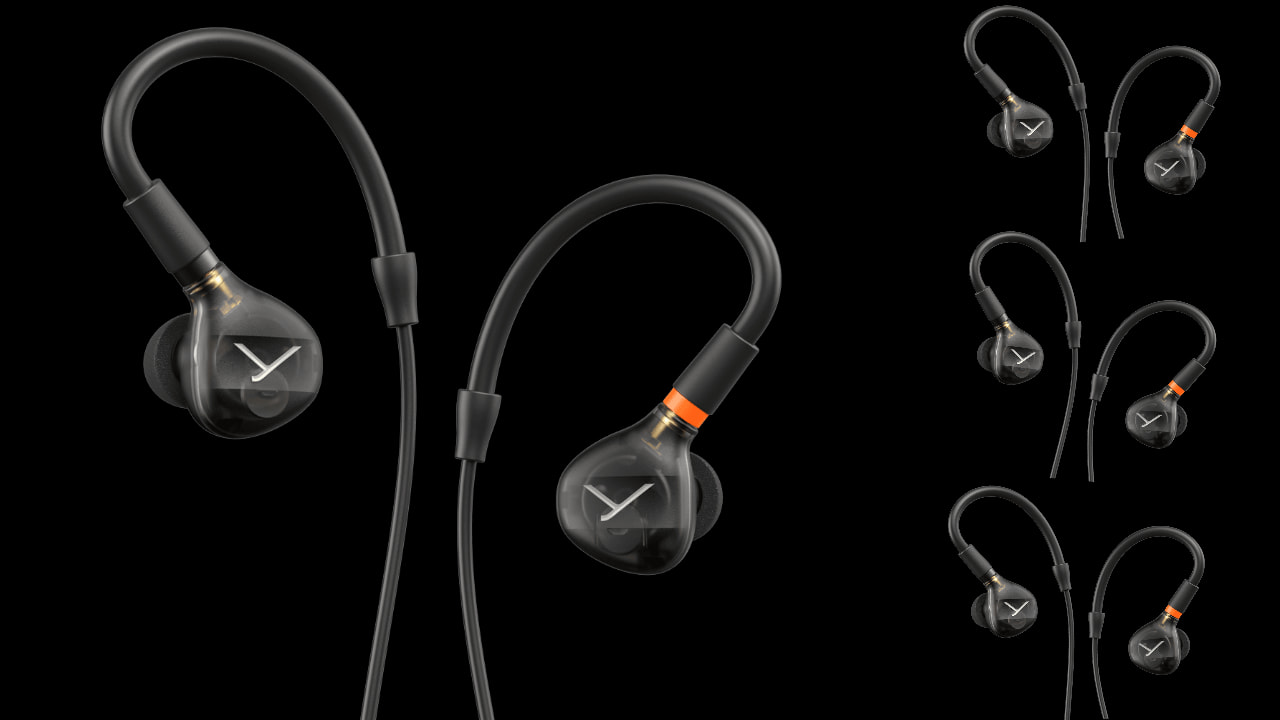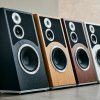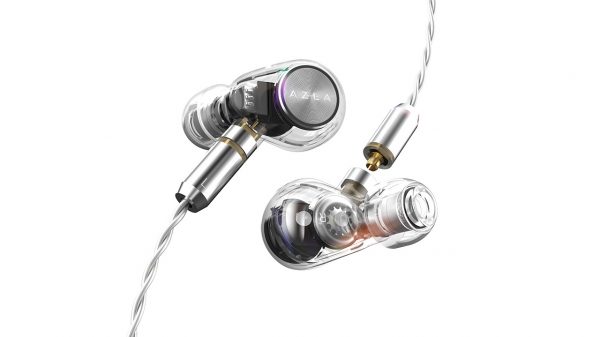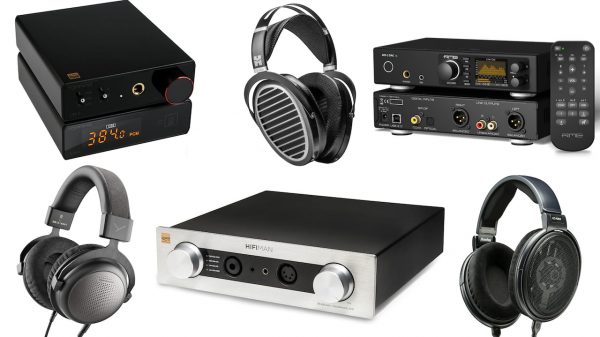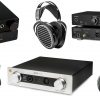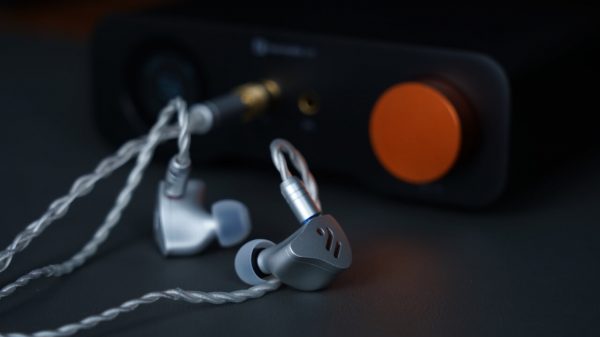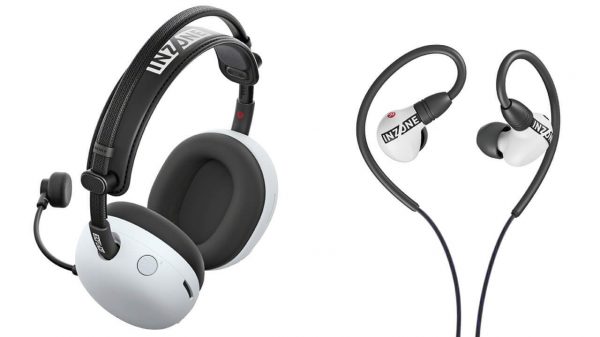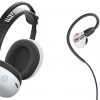Beyerdynamic has taken a clever and unusual approach with its new in-ear monitors: the DT 70 IE, DT 71 IE, DT 72 IE, and DT 73 IE. Each retails for $579.99 and shares the same shell, cable, drivers, and impedance — yet every model is tuned for a distinct purpose. The DT 70 IE delivers a neutral, reference-level sound ideal for mixing, mastering, and critical listening. The DT 71 IE is tailored for drummers and bassists, adding extra weight and impact. The DT 72 IE emphasizes clarity for guitar and vocals, while the DT 73 IE is refined for classical instruments, including strings and piano.
At this price, it’s rare to see four IEMs that are identical in design but distinct in voicing, giving working musicians the freedom to choose the exact tuning that matches their needs without paying more or sacrificing quality.
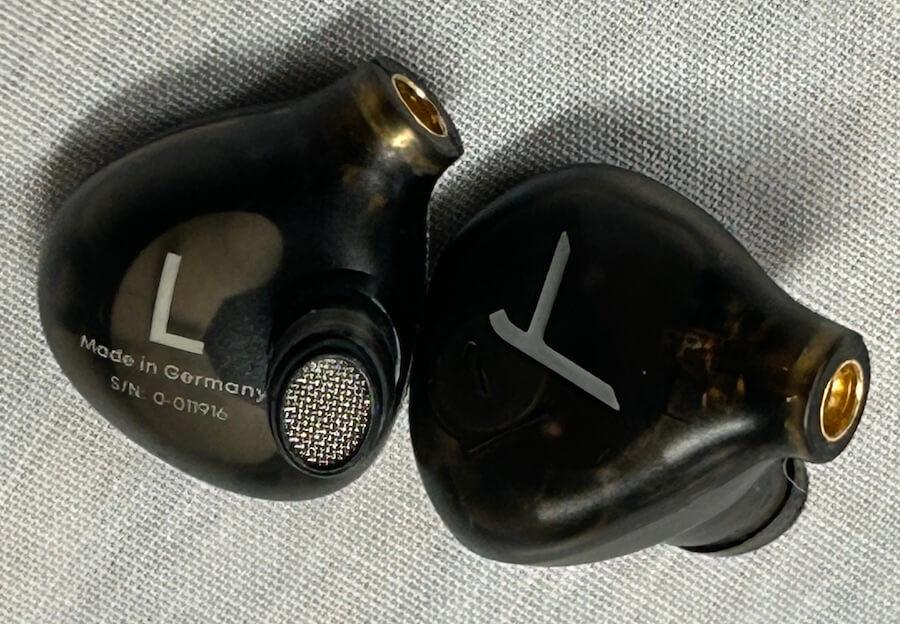
Build Quality and Fit of the Beyerdynamic DT 70 IE, 71 IE, 72 IE, and 73 IE IEMs
The packaging is classic Beyerdynamic: a slipcover with the model number wrapped around a generic box, inside of which you’ll find the cards and a hard case. The case itself runs the full length and width of the box, which means there’s actually room to fit the monitors, cable, five sizes of silicone tips, three sizes of foam tips, a spare set of wax guards, and the obligatory 3.5mm to 6.35mm adapter without playing Tetris.
True to Beyerdynamic’s working-class roots, the case is stiff enough to survive being tossed in a backpack or gig bag and big enough to haul the extras you might actually need. Most people will ditch the spare tips once they find their size, but the inclusion makes sense if these are going to see duty on tour or get passed around on a worship team — better to carry everything than discover mid-set that someone else’s ears don’t match yours.
Pull the in-ears and cable out of the case, and the first thing you notice is the familiar Xelento-inspired shape — only now in a lighter polymer instead of the metal shells Beyerdynamic used on earlier models. The cable attaches via MMCX connectors, though that’s not obvious at first since they ship with the cable already attached. The nozzles are elongated, so tips need to be oriented correctly, and unlike most in-ears, these don’t come with a medium size pre-installed.

The silicone tips have color-coded shafts to keep things organized — for me, the second-largest size was the sweet spot. Be careful when swapping tips, though: it’s easy to push them too far down the nozzle, which kills the seal. The only thing that separates one model from the next is the tiny model number printed underneath the earpieces, just below the L/R indicators. They’re small enough that from across the room, you’d never know a DT 70 is a DT 70, which makes it rather easy to end up with a left 70 and a right 72 if you’ve got more than one pair lying around.
The cable is rubber-coated and came out of the box with almost zero memory, even after being coiled for shipping — a relief on a performance-oriented IEM where dealing with curls and kinks is the last thing you need. The northern ends have memory wires and a small weight designed to sit behind the ear, though it can take a minute to get it just right. I struggled a bit with my left ear at first; not hooking it snugly meant the bud wanted to twist and ruin the seal every time I moved.
Once properly fitted, cable noise was essentially nonexistent — a huge plus for musicians who don’t want every handshake or strap brush turning into a percussion track. The cable itself isn’t heavy, but it’s clear Beyerdynamic put some thought into armoring it where it counts. Unless you’re genuinely abusing it, replacing the cable shouldn’t ever be necessary.
The Beyerdynamic shells are lightweight and shaped well, making these surprisingly comfortable for long sessions once you’ve got the fit dialed in. No hot spots, no fatigue — they practically disappear in your ears. My only gripe is the cable, which runs a bit shorter than I’d like. Wrapping it around mid-back to connect to a wireless unit can feel a little snug. It’s not a dealbreaker, but the length is more in line with typical audiophile IEMs than the longer Estron-style cables some competitors throw in for stage use.
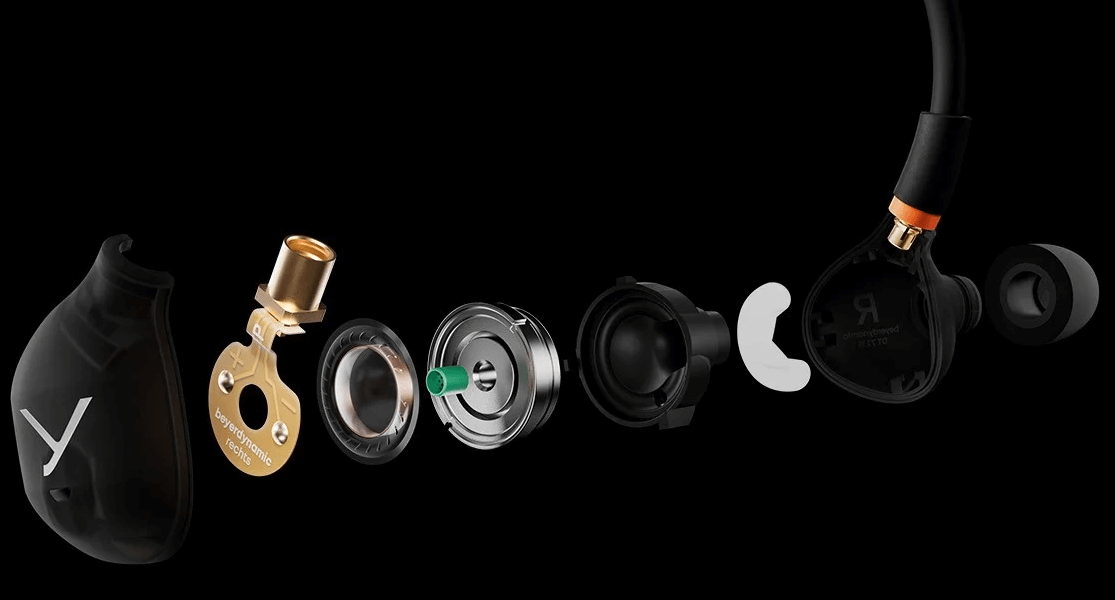
Technology, Drivers, and Tuning
The Beyerdynamic DT 70-73 IE IEMs use German-made 11mm Tesla dynamic drivers, the same tech found in the T1 and T5 headphones. By combining high magnetic flux density with a lightweight design, these drivers push for speed and clarity that’s impressive for in-ear monitors.
Specs are solid across the board: frequency response from 5Hz–40kHz, sensitivity of 113 dB/mW (@1kHz), THD at 0.02%, and 16Ω impedance. Among the four models, sensitivity fluctuates by only a decibel or two; everything else is identical, so you’re not chasing slightly different specs between the DT 70 and DT 73.
The low impedance and high sensitivity make them easy to drive from pretty much anything — a mixing board, wireless pack, Walkman, or even your home system. In other words, you don’t need a secret lab or a boutique amp to get these singing, which is a nice change of pace from some “pro” IEMs that demand a PhD in electronics just to get them off the bench.

How the DT 70-73 IE IEMs Sound: Common Listening Impressions
Sub-bass extends impressively, rumbling well down into the lowest octaves. Sure, the very bottom loses a bit of nuance, but it doesn’t lose impact — it still hits. What really grabs you, though, is the mid-bass dynamics. All four DT 7x models deliver detailed, textured mid-bass, and while the levels shift slightly between them, they share something unusual: the ability to go from near silence to full-on in-your-face without smearing or losing detail.
I started listening thinking these were “just” neutral, reference-style IEMs, and came away realizing the DT 7x series actually has bass dynamics that outclass a number of my own CIEMs four or five times the price. The tuning keeps the reference sound engaging rather than boring, and in the models where the bass is dialed up, bassheads will genuinely be smiling.
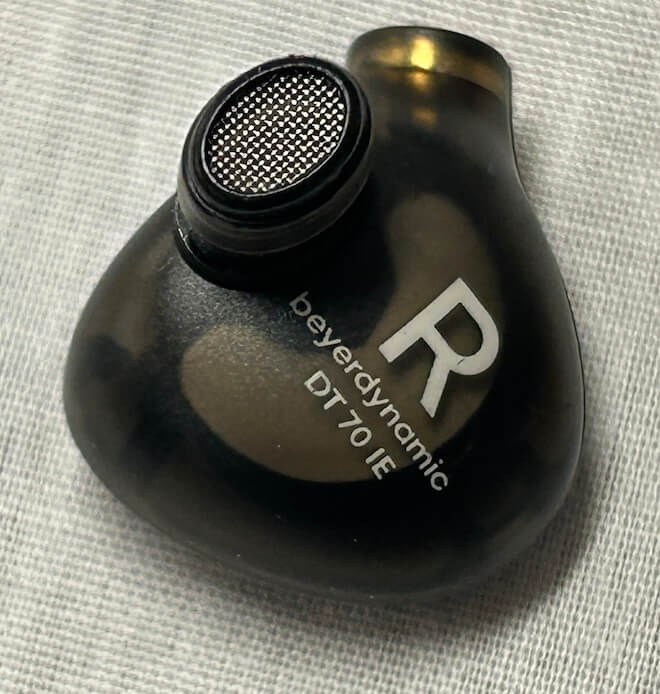
The mids on the DT 7x series are well textured and satisfyingly weighted, with no lower-mid congestion from the bass and very little thinning as the tones climb. What stands out most is the clarity and realism, mirroring the dynamic range of the lows: from whisper-quiet to full tilt, the mids maintain their detail and presence. Strings carry energy, and vocals come through clean and nuanced without ever tipping into fatigue or nasal territory. In short, these IEMs manage to sound lively and expressive without needing a “mids boost” cheat code.
The lower treble on the DT 7x series has a slight lift, as you’d expect from most Beyerdynamic gear. They tend to tune treble a touch hotter than some competitors, giving plenty of air and sparkle, though treble-sensitive listeners may find them a bit fatiguing over long sessions. Here, the lift adds snap to percussion and energy to strings without throwing things out of balance or turning cymbals metallic. True to Beyerdynamic form, they take EQ very well, so anyone wanting to tame or accentuate the treble can do so without sacrificing the overall character.
All four DT 7x IE models share a solid soundstage with a little more width than depth and decent height. I’m not expecting miracles from in-ears — their closed design and size just don’t lend themselves to expansive geometry — but these deliver above-average staging.
Imaging is precise, movements are easy to track, and definition is very good. Instrument separation is also better than what you typically get from in-ears. They manage to image slightly outside the head, which makes listening more engaging than I expected and keeps things from feeling cramped or claustrophobic.

How Each DT 70–73 IE IEM Sounds: Model-Specific Listening Notes
DT 70 IE (Mixing & Critical Listening)
The DT 70 IE stays near neutral, with barely a hint of lift in the lower treble. “Neutral” often gets written off as boring, but don’t be fooled — the lack of emphasis on any one frequency just means everything plays its part. Dynamics, detail, and clarity make the DT 70 IE surprisingly engaging. I found myself forgetting I was supposed to be working, as immersion with enjoyable material came easier than expected.
DT 71 IE (Drum & Bass)
Bassheads, rejoice. The DT 71 IE is easily the most V-shaped of the four models, but don’t expect the usual loss of detail between the lifts — everything remains clear, and EQ can even push some lower mids back into the mix if needed. Big bass and big treble give percussion the slam and rumble it deserves, with snare snap and rattle coming through cleanly. As a bass player, I appreciate an in-ear that gives a solid foundation, and the DT 71 IE delivers nearly exactly what I’m looking for on stage or in rehearsal.
DT 72 IE (Guitar & Voice)
The DT 72 IE is my least favorite tuning of the four. Bass is dialed back while the mids and lower treble are lifted to put vocals front and center. They shine on choral or a cappella tracks — think Pentatonix — but the reduced low-end makes them less versatile for general listening. These are clearly tuned to keep timing intact while emphasizing mids and vocals, which works for their intended role, but don’t expect thumping lows if that’s what you crave.
DT 73 IE (Classical Instruments & Keys)
I enjoyed the DT 73 nearly as much as the DT 70. It delivers a linear low end through the lower mids, followed by a mild upper-mid boost, a return to neutral in the lower treble, and a touch of energy in the high treble. This makes it ideal for strings, giving overtones a realistic lift — in fact, it’s one of the best examples I’ve heard of natural string tonality in an IEM. That said, the treble lift can make cymbals a bit hot, and some vocals don’t benefit from the mid emphasis, so it’s not an all-rounder. But if your playlist skews toward piano concertos or string quartets, this one is a no-brainer.
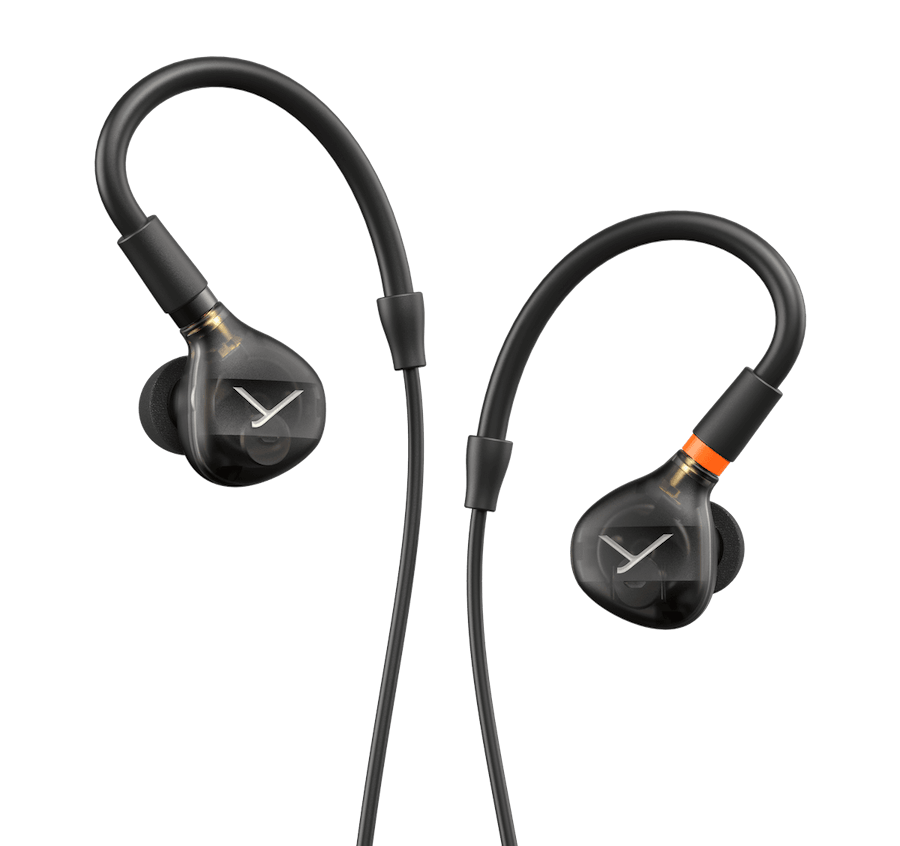
The Bottom Line
This was both one of the easiest and one of the hardest reviews I’ve done in recent memory. Physically, the DT 70-73 IE series is identical, making the build and fit section a breeze. The real challenge came in dissecting the tunings, finding the commonalities, and teasing out the subtle differences — hours of listening and note-taking later, I came away impressed. Build quality and design are excellent, though I’d still prefer a slightly longer cable for stage use.
Sound is where these IEMs shine: dynamic, detailed, and textured across the volume range. Beyerdynamic clearly did their homework, with each model hitting its intended use case. If you want a neutral, all-arounder for critical listening, the DT 70 IE is your best bet. Classical or piano-focused listeners will gravitate toward the DT 73 IE, while the DT 71 IE and DT 72 IE deliver purpose-built tunings for bass-heavy or vocal-centric applications.
They aren’t cheap, but compared to a custom in-ear monitor for stage use, these offer professional-grade performance without breaking the bank. In short: precise, versatile, and tuned with real-world musicians in mind — each model does exactly what it’s supposed to, and does it well.
Pros:
- Four distinct tunings optimized for specific use cases: mixing, bass, guitar/vocals, classical
- Excellent dynamics and detail across the volume range
- Above-average soundstage and imaging for in-ear monitors
- Transparent, natural mids and well-textured bass
- High build quality and robust case for stage or travel use
- Low impedance and high sensitivity make them easy to drive from a wide range of sources
Cons:
- Fit can be fidgety, particularly the memory wire behind the ear
- Cable length a bit short for some stage setups
- Pricey — buying all four models isn’t realistic for most musicians
- Visually identical — easy to mix up models if you own multiple pairs
Where to buy: $579 at Amazon | Beyerdynamic
Related Reading:
- Campfire Audio Launches $1,399 Grand Luna IEMs—Because The High-End Earphone Game Clearly Has No Finish Line
- Beyerdynamic’s DT Series IEM Offer Different Sonic Profiles For Engineers And Musicians: NAMM 2025
- Best IEMs: Editors’ Choice 2024
- Astell&Kern And 64 Audio Launch XIO In-Ear Monitors — First Listen At CanJam London 2025?

